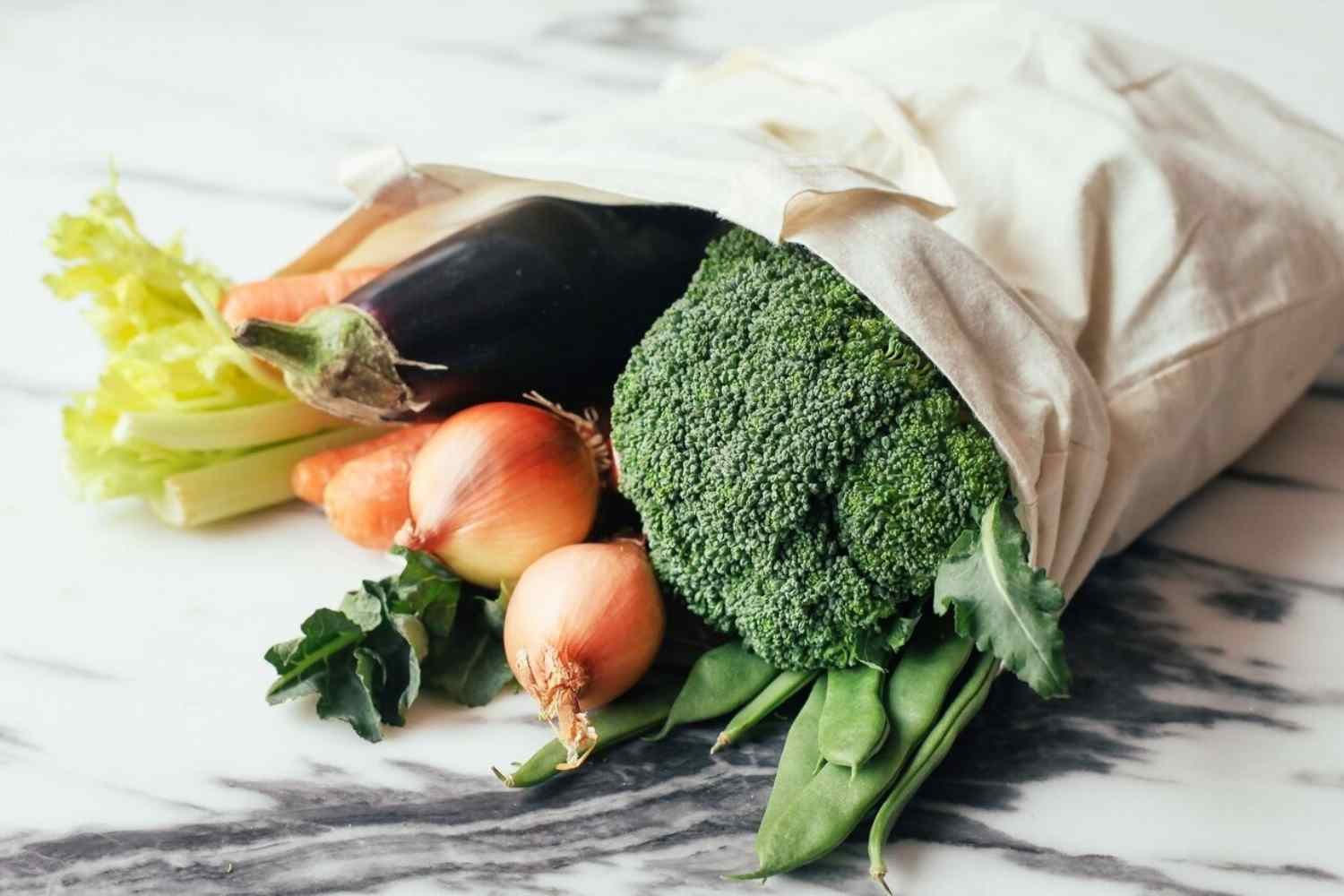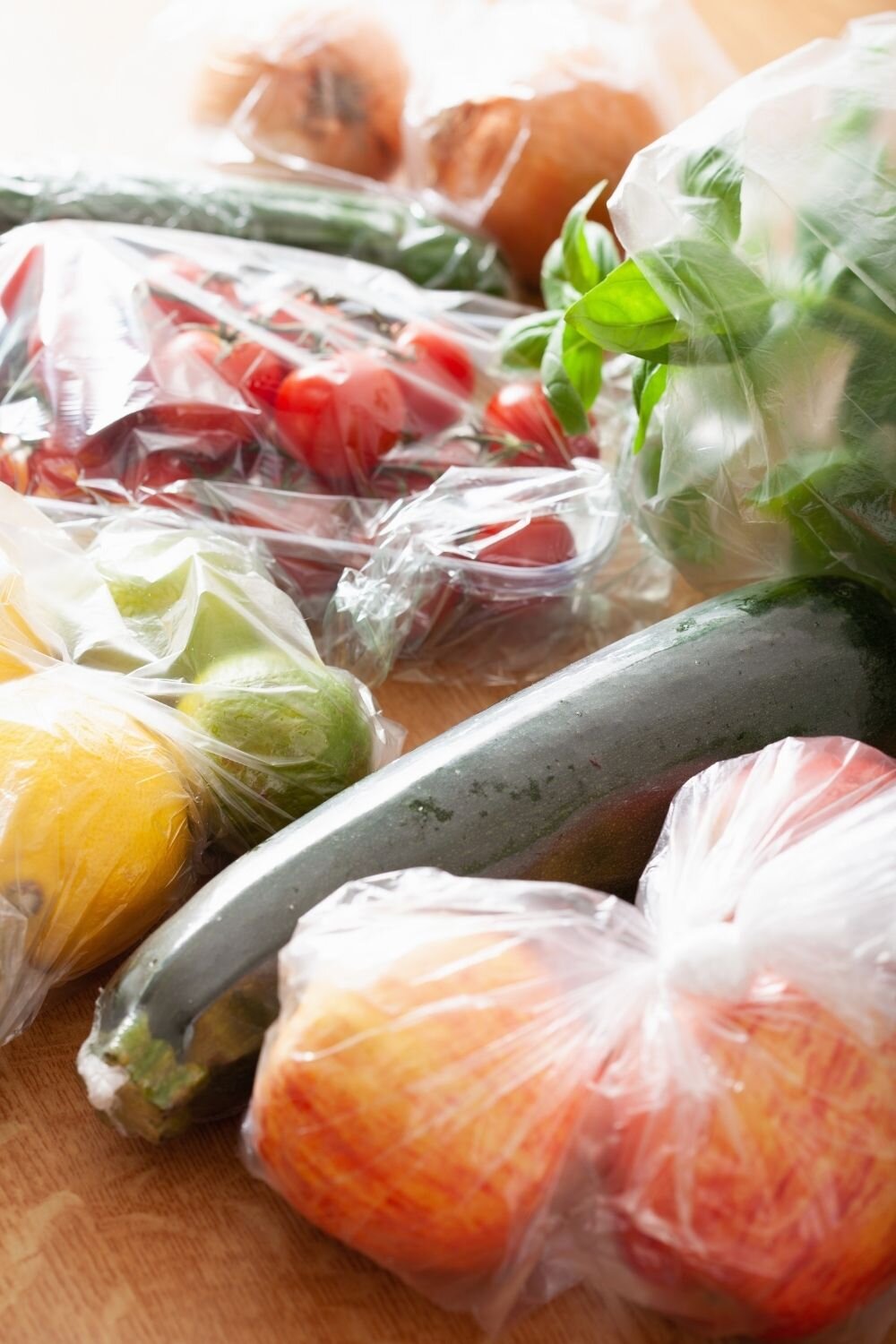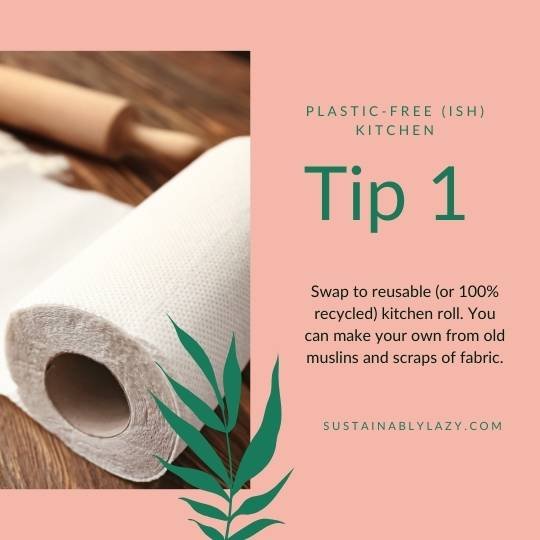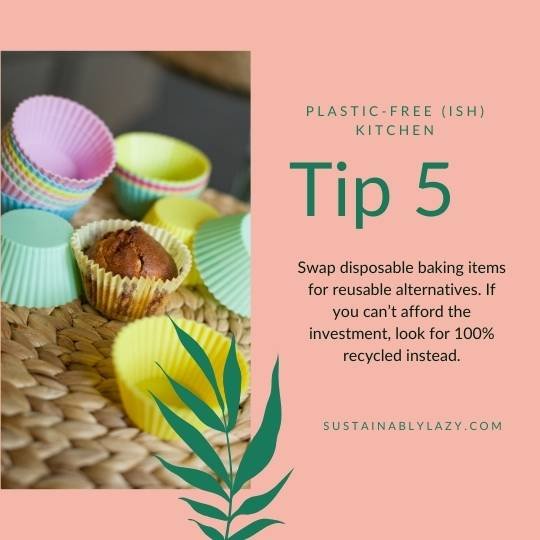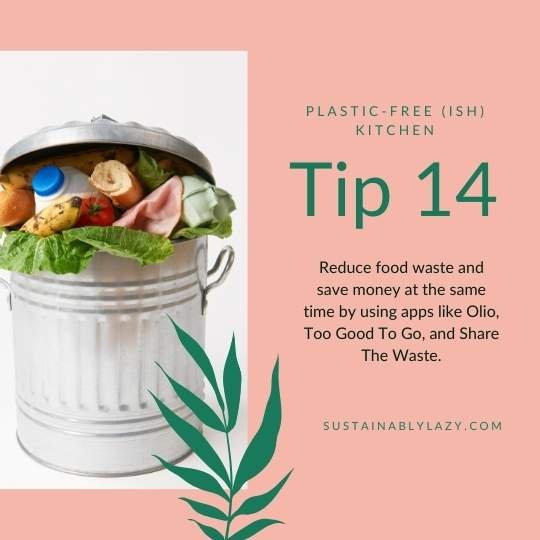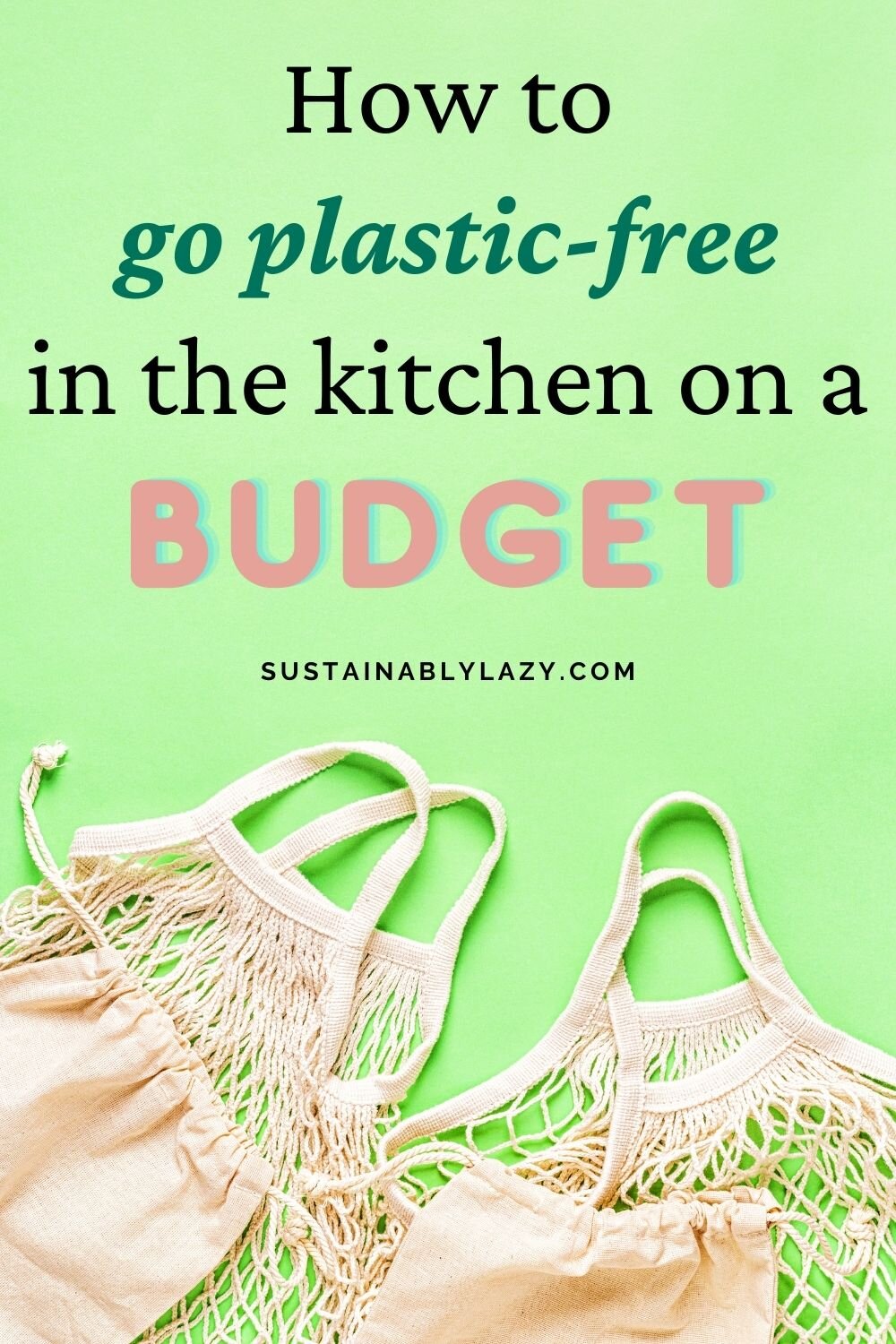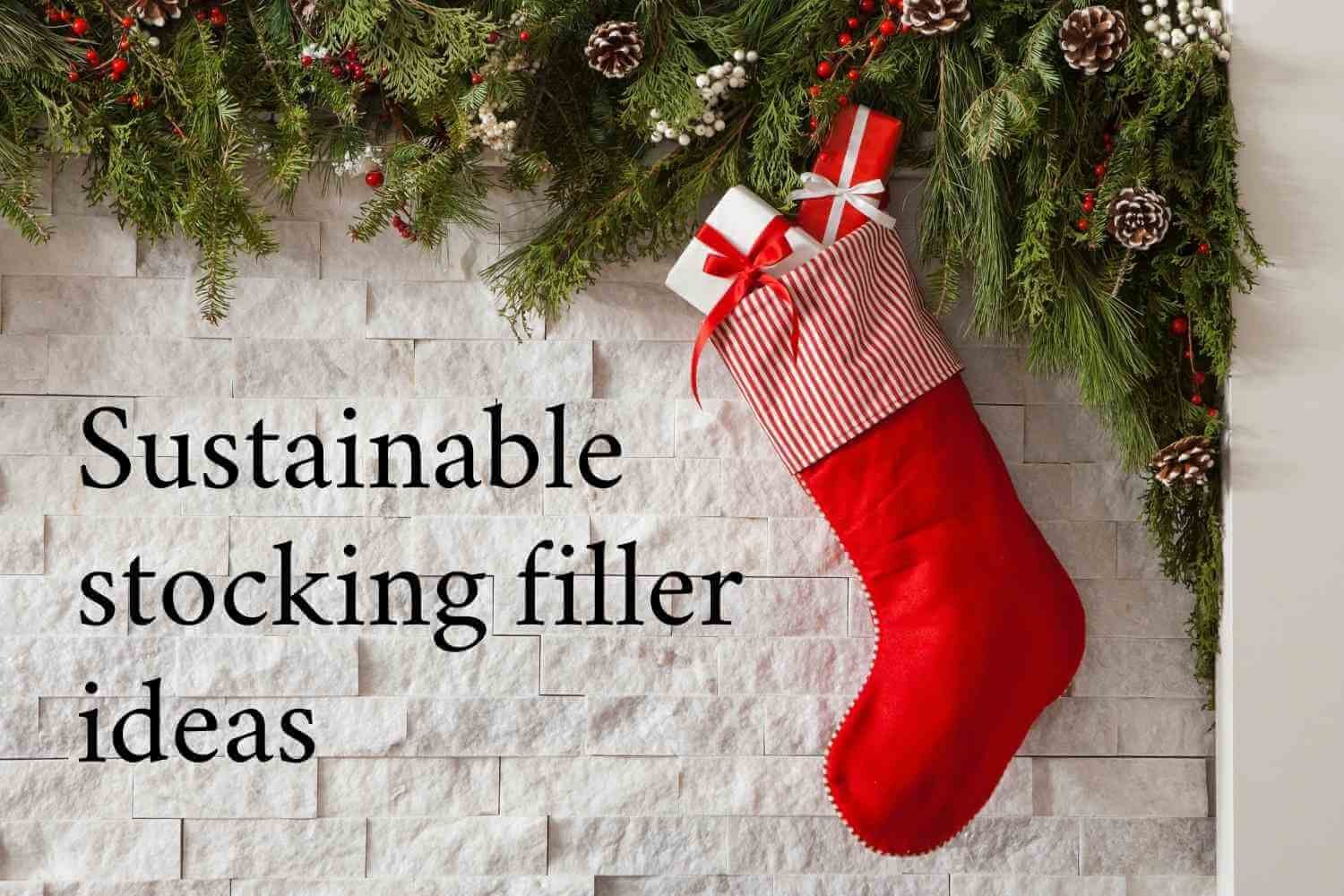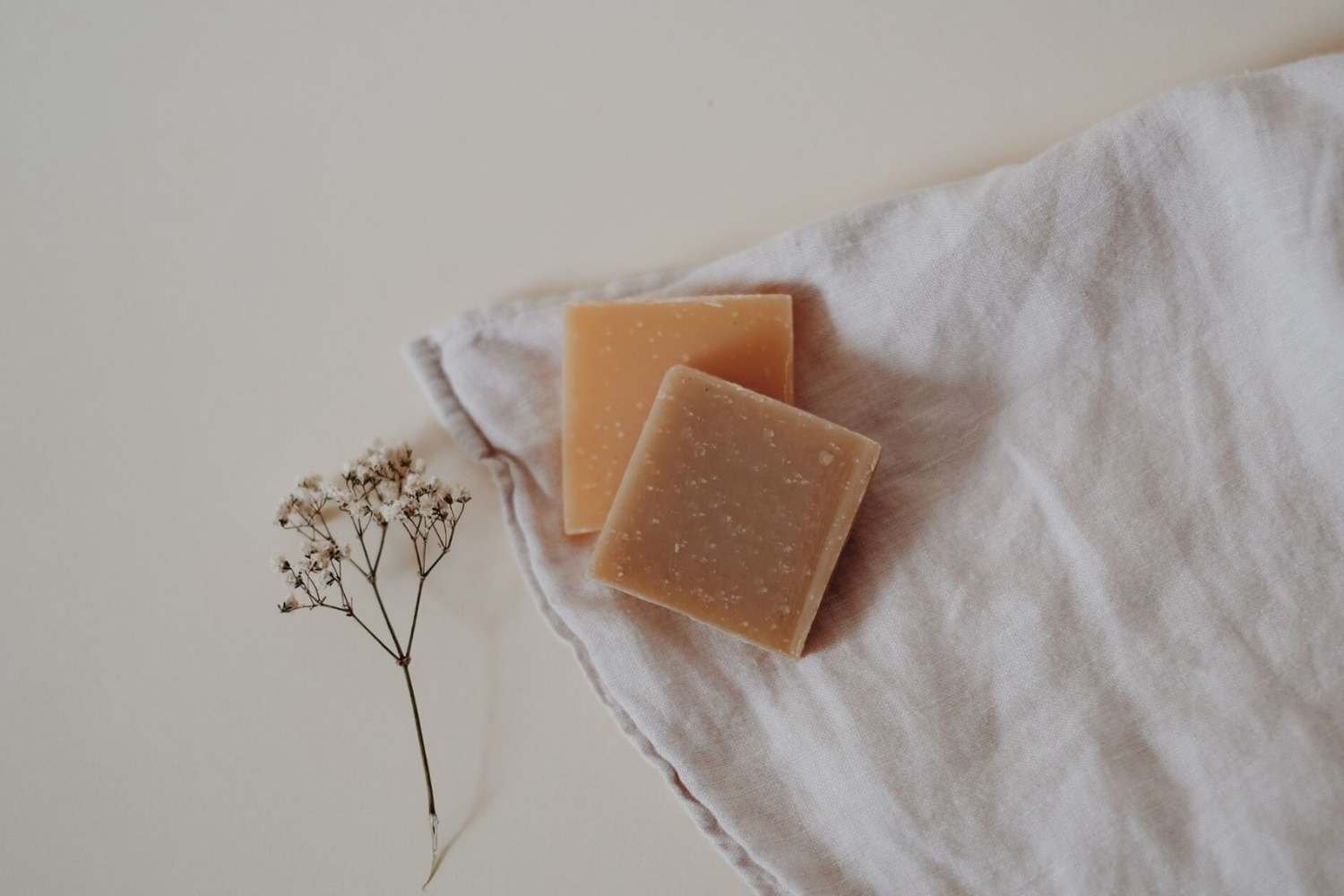18 Ways to Reduce Plastic in Your Kitchen on a Budget
This post is in the process of being edited and improved. I appreciate your patience.
This page contains affiliate links to sustainable, plastic-free shops
Are you struggling to break free from the convenience of plastic in your kitchen?
Or is the price of sustainable products holding you back?
Whatever your reason for being here, I’m going to help you take your zero waste game up a notch.
Are you up for the challenge?
For many (including myself), the kitchen is the hardest room to reduce your plastic consumption.
This is partly down to the supermarkets' obsession with unsustainable packaging - it shouldn’t be so hard to find a plastic-free cucumber!
Some people stay one step ahead by going to multiple places to get their food package-free, others forage or grow their own food.
It is important to remember that this isn’t a possibility for everyone.
An eco-friendly lifestyle is a privilege. If you’re on a low income, don’t have access, or you’re not physically or mentally able to do what is required to go plastic-free in the kitchen (or any room), that’s ok. You can still be a valuable part of the zero-waste movement. We all have different strengths.
I like to say, focus on what you can do instead of what you can’t.
COMING UP
Plastic-free kitchen: how to get started?
What should I do with the existing plastic in my kitchen?
Avoiding single-use plastic on a budget
18 Ways to reduce plastic in your kitchen on a budget
1. Plastic-free kitchen: How to get started
When you’re trying to go plastic-free in the kitchen, the simplest way to get started is to observe what you throw away.
One method for doing this is a bin audit (you can find simple steps for doing a trash audit in my blog post 3 ways to start an eco-friendly lifestyle).
You can either count the plastic rubbish you throw away at the end of the week (it will be easier if you keep any food scraps in a different bag or bin while doing this) or you can make a tally list where you note down each item as you throw it away.
I find the second option the easiest as my council doesn’t offer a composting service, but it doesn’t matter how you do it as long as you can notice any patterns or problem areas.
2. What should I do with the existing plastic in My kitchen?
If you’re at the beginning of your eco-friendly lifestyle transition, you’ll more than likely have lots of plastic in your kitchen.
A quick note - try not to let the eco guilt get the best of you. We live in a throwaway society and were raised with this mindset. It’s wonderful that you’re here now making positive changes.
Single-use plastic
If you have a lot of single-use plastic in your kitchen, for example, cling film or kitchen roll, then you may want to look into reusable alternatives so you can swap when you’re about to run out.
Switching items gradually over time lowers the upfront cost and creates sustainable habits that you’re more likely to stick with.
There are lots of eco-friendly replacements now and some of them are unnecessary. It’s a good idea to read reviews or ask others on social media what they like - there are lots of eco-friendly Facebook groups and we have a friendly community over on Instagram.
Reusable plastic
If you have reusable plastic in your kitchen, you do not need to throw it away. A plastic-free kitchen means not buying new plastic. It's perfectly okay (and normal) to have plastic in your home - we all have a cupboard full of bags for life and old takeaway boxes.
Some people do not want to store their food in plastic. Thankfully there are lots of ways you can reuse plastic containers, like organising arts and crafts or puzzles.
Food packaging
Food packaging is the worst culprit in the kitchen with UK households throwing away about 100 billion items a year.
When it comes to food, the more you are ‘able’ to cook from scratch and eat unprocessed food, the less plastic you will consume.
This is a lot easier said than done for people who struggle with mental health or executive dysfunction. If you can’t improve this area right now, then just focus on something else. You don’t have to be perfect! Individuals cannot change the world on their own.
3. Avoiding single-use plastic on a budget
As you get better at avoiding new plastic, you will probably find you need alternatives to certain items in your kitchen.
This may be because something breaks (like the time I melted my plastic spatula) or when a single-use product runs out.
The zero-waste goal is to find a product that is made responsibly. Ideally, one that you won’t have to buy again so you will save money in the long run.
You can also shop second-hand for kitchen products - guess who bought a new spatula in the charity shop! I rent my home and we move every few years so almost everything in my kitchen was bought second-hand, including appliances.
The other option is to give up that product. While I definitely need a spatula, a straw is something I can happily live without. This is not the case for everyone though as people with certain health conditions need plastic straws.
Everyone’s plastic-free (ish) kitchen is going to look different and nobodys’ is going to be perfect.
18 ways to reduce your plastic waste in the kitchen
Swap to Reusable kitchen roll
Environmental issues with kitchen roll
Kitchen rolls (or paper towels if you’re in the USA) come packaged in plastic and then can’t be recycled once they’re dirty.
It’s a disposable product that’s become a staple in most kitchens. You may not be able to imagine your life without it.
In the USA they use around 13 billion lbs of paper towels every year and in Europe, we use half of that (on average that’s 40 rolls per household).
Not only is plastic packaging an issue, but that’s a significant amount of deforestation.
Thankfully there are lots of eco-friendly and zero-waste alternatives now.
How to give up plastic packaged kitchen roll
Kitchen roll was one of the first swaps I made when I started reducing plastic in my kitchen. It was easier because I was using cloth nappies and cloth wipes at the time.
First, you need to decide what is the most practical solution for your family.
The three options are:
DIY washable kitchen roll - this is the budget option and what I use. It’s basically using cloths for everything.
Store-bought reusable kitchen roll - more expensive at first but lasts a long time. Will save money in the long run.
Recycled kitchen roll - if you’re not ready for reusable kitchen roll, you can get it made from 100% recycled paper. This prevents deforestation and is usually wrapped in paper.
My homemade kitchen roll, aka the rag basket.
How to make your own DIY kitchen roll
I’ve not used disposable kitchen paper for over four years now.
At first, my partner was not impressed with the idea but now we can’t remember what you actually use kitchen roll for.
I was on a tight budget when I had my first child so I made my own out of old muslins and old clothing that wasn’t good enough to donate.
They aren’t as pretty as the store-bought variety, but they do the job.
I prefer to keep things as possible so I simply cut them up. But you could measure them and sew the edges if you’d like better-quality ones.
The clean cloths live in a large basket (see photo) in a convenient place, and the dirty ones go in a white plastic bin with a mesh bag inside.
It’s good practice to rinse out any food residue from them first so they don’t clog your washing machine.
Every 2 or 3 days they get a hot rinse in the machine to ensure they are free from bacteria, and then I add normal clothes to the load for the main wash.
Where to buy reusable kitchen rolls:
UK:
A Slice of Green - organic cotton
Eco Egg- bamboo viscose
Regn - organic cotton
Itsy Bitsy Stitches - cotton
USA:
Marley’s Monsters - organic cotton
Where to buy recycled paper kitchen rolls:
USA:
Reel - 100% recycled paper and plastic-free packaging
UK:
Ecoleaf - 100% recycled paper with plastic-free packaging.
Tip 2 - Use old jars as food storage
Environmental issues with plastic containers
While plastic storage containers are designed for reuse, it doesn’t change the fact they are made from fossil fuels.
Tupperware reported sales of over $1.3 million in 2022, and then there are the cheaper ranges from Amazon and Supermarkets.
While the better quality containers can last a very long time, the flimsier ones do not. As only 9% of plastic is recycled, it is vital we look for alternatives.
If you’re in need of more storage for food and drink, consider reusing glass jars.
How to use glass jars for storage
Have you started batch cooking more? Maybe your flimsy plastic containers have broken or you’ve started using a refill store.
Whatever reason you’re in need of more storage options, reusing jars from your food shopping (like pasta sauce) for storage is wonderful.
Not only does it keep the food in your pantry fresh, but it helps you manage your inventory as you can see what’s inside easily. I know exactly what is in my home now that it’s in glass jars and I even use them in the freezer.
I also use larger jars (some that I’ve found in charity shops) to store cleaning products, like soda crystals, away from moisture.
What should you do with the plastic containers you already have?
When you begin reducing the plastic waste in your kitchen, you might wonder what you should do with the plastic containers you have.
The answer is KEEP THEM.
While I try to avoid putting hot food near plastic because of the risk of chemicals leaching, I wouldn’t recommend throwing away plastic containers just to replace them.
Every material that is produced has a carbon footprint.
Glass may be more non-toxic, but it’s manufactured in hot furnaces which means it still has a high carbon footprint.
That’s why reusing what comes in your food shopping is the most sustainable option, along with finding glass jars second-hand. Check on local marketplaces as well as thrift stores.
If you’re worried about the harmful chemicals inside plastic, use your existing containers in low-risk areas, like dry, cold foods, cleaning products, or organisation of other things in your house, like medicine.
Tip 3 - stop buying cling film
Environmental issues with cling film
Even when I didn’t know plastic was damaging the environment, I always hated cling film. I can’t seem to get a piece of the roll without it trying to wrap me up. Needless to say, I had no problem giving this item up.
Did you know that 1.2 billion metres of cling film is wasted each year in the UK and accounts for 3% of plastic packaging waste?
Cling film also produces large amounts of toxic chemicals as it biodegrades which is bad for the environment.
Thankfully there are lots of alternatives, including some hacks you can try at home without buying anything new.
How to replace cling film on a budget
If you’re trying to reduce your plastic waste on a budget, here are some ideas you can try without buying any expensive eco-swaps:
Wrap food in a tea towel or clean piece of fabric
Pop a plate on top of the bowl instead of covering it with cling film
Put food into a food storage container you already own
Get crafty and make your own beeswax wraps or bowl covers
Eco-alternatives to clingfilm
These eco-friendly cling film replacements aren’t essential but do make life easier. They can be saved up for or given as gifts.
UK:
Beeswax wraps are particularly good for lunchboxes and protecting food when going out. Make sure you wash them in COOL soapy water or they’ll go sticky.
Green Island make silicone bowl covers. I’ve got some of these and they are useful, provided you can match them with the right size bowls. You can make it easier for yourself by leaving the lids next to the bowls they fit on.
Helen Round - at £20 for 3, this isn’t a budget item but I wanted to include it anyway as they are beautiful bowl covers made from sustainable linen.
USA:
Bees Wraps - bowl covers and wraps made from organic cotton with either beeswax or coconut oil
Tip 4 - Switch to reusable sandwich bags
Environmental issues with sandwich bags
Another disposable plastic item that we buy over and over again in our kitchen is sandwich bags.
Instead, you could buy a reusable baggie once and keep it forever.
I think these are great. I’ve used ones with zips and ones with velcro and they are perfect for lunch boxes. The velcro ones are particularly easy for young children to open.
They are waterproof inside and easy to clean.
Where to buy reusable sandwich bags:
UK:
A Slice Of Green - makes organic cotton sandwich baggies (with polyester lining). They are made by a women’s cooperative in India that provides opportunities for gender equality. This is the one I have.
Keep Leaf makes cotton and polyester sandwich bags for £5.99. They are made in India but are not organic.
USA:
Stasher - food-grade silicone sandwich bag
fluf - organic cotton sandwich bag
BeeBAGZ - cotton and beeswax sandwich bag sets
Tip 5 - Swap to reusable baking products
Environmental issues with baking products:
You might not have considered baking products yet as many of these disposable products tend to be paper. Sadly lots of it comes in plastic packaging, and things like baking paper (which is lined with silicone) can’t be recycled.
This is not to be confused with greaseproof paper which is coated in oil and can usually be recycled. Although, the options for different shapes and sizes of parchment paper tend to be wrapped in plastic.
The solution to this may just be that you need to take a bit of extra time to cut the paper into the right size yourself.
Most of the reusable alternatives to single-use products are made from silicone which is extremely durable and prevents waste.
Reusable baking products:
UK:
Stainless steel muffin tin - for those who are trying to avoid non-stick coatings
Lakeland silicone muffin cases
US:
Zero Waste Store - Reusable baking parchment sheet
Tip 6 - Bake your own snacks
Environmental issues with food packaging
In our modern, busy society combined with a cost of living crisis, getting all your food from organic farmers markets with no packaging can feel impossible.
It’s hard not to feel bad about this once you learn that 83% of the plastic packaging we throw away is from food and drink.
I’m all about realistic targets and baby steps because guilt and stress won’t do you any good.
The trick is to chip away at your plastic consumption by adding small habits to your life one at a time.
If you’ve got a spare hour on the weekend, why not try baking your own snacks for the week ahead?
Tip 7 - Plastic free children’s tableware
Environmental issues with kid’s plates and cups
According to FMI, the plastic sippy cups market is estimated to be valued at US$ 9,744.02 million in 2023. Many parents own at least 2 and often buy more if their child doesn’t take to a specific brand.
Once done with, they tend to be thrown away as recycling information is not clear.
A simple internet search for baby plates brings up a massive variety of themed, colourful, and divided plates… the majority made from plastic.
While there is a definite advantage to plastic kid’s tableware, more needs to be done by corporations to use recycled materials and reuse the products that already exist.
The most budget-friendly alternative to plastic baby plates is to let your baby eat off their highchair tray or table - it’ll likely get messy anyway. You can place a tablecloth or old shower curtain on the floor and you are all set.
An option for older toddlers (depending on their spiritedness!) is to use the same plates as the rest of the family. These are easy to pick up in charity shops so if one gets broken it’s not the end of the world.
There are lots of options for plastic-free children’s plates and bowls available nowadays and to be honest, there are issues with all of them.
Are bamboo/wood plates safe for kids?
Cute divided plates made from wood and bamboo were popular on Instagram when I had my first baby. Unfortunately, these bamboo plates aren’t as safe as I imagined.
Bamboo is a really sustainable plant, but to become a plate, it has to go through a manufacturing process. It is not pure bamboo.
This means other substances are added to create the material, such as melamine or glue. Since then, it has come to light that formaldehyde is present in the final products.
This came to a head in 2022 when Primark’s character plates were recalled in the UK and US for containing levels of lead and formaldehyde that were above limits.
If you’re already using the chunky wooden plates, that is the better option. The thin, colourful plates are the worst and may even be illegal.
Hard plastic plates for kids
Hard plastic (the type milk jugs are made from) is the safest kind of plastic. They are very useful for young children due to usually being light and (sometimes) durable, but as they are derived from fossil fuels, it’s bad for the environment to produce them.
This can be solved by getting them second-hand.
Better options for kids’ plates
Stainless steel is a non-toxic option if you don’t mind the camping style!
Food-grade silicone is also an okay solution. It is hard to recycle but much more durable than plastic. It’s important to check it is 100% food-grade, which you can do by digging your nail in and checking it doesn’t turn white (a sign there is filler inside it).
Plastic-free cups:
The most budget friendly way to avoid plastic sippy cups is to introduce an open cup as soon as they are old enough to drink water.
This worked really well with my first child and I never needed a sippy cup at all (although at the time I didn’t have any concerns about bamboo).
Unfortunately my second loved making a mess on purpose and just wanted to play with the water. I really needed a sippy cup with her if I wanted her drink to last more than 7 seconds.
If I’m honest, the range of plastic-free children’s cups isn’t brilliant, however, there are lots more options than there were 5 years ago.
We used the Munchkin steel cup and a silicone Liewood sippy cup, but she kept poking her finger in the spout and then it leaked everywhere.
UK:
Kidly Label silicone sippy cups - open cups with handles
Klean Kanteen - steel baby and water bottles with different lids so they grow with your child.
Klean Kanteen - recycled steel cup with straw - compatible with sippy spout
Munchkin - sell a stainless steel cup with a plastic top
Munchkin - Bamboo open cup with silicone lid
Green Island - silicone sippy with straw (doesn’t look leakproof)
USA:
Glass sippy cup - has a silicone spout
ezpz open cup - silicone
Klean Kanteen - stainless steel baby bottles and water bottles
Tip 8 - Hire reusable tableware for parties
Environmental issues with parties
Continuing with the theme of tableware, let’s talk about parties and BBQs.
I doubt it’s surprising to you by now that disposable plates, cups. and cutlery are bad for the environment.
You might think you’re using paper plates, but if they’ve got a shiny, smooth surface then they may be coated in plastic.
It really takes the fun out of it once you realise the tableware you used for one day could be in the soil or ocean for up to 500 years.
Thankfully there are some budget-friendly eco solutions!
Hire your party tableware for free
I discovered the Party Kit Network when I was organising my son’s birthday party last year.
You can hire 15 plates. bowls, cups and reusable napkins for free, along with various other items you might need. There is a small fee for extra (£2 I think) and the colours are unisex.
It’s run by volunteers and anyone can sign up to bring the service to their own area. It is currently only available in the UK and Australia.
If you know of a similar service in other locations then let me know in the comments so I can include it here.
Eco-friendly decorations
I’ve had lots of luck getting my kids’ birthday party decorations second-hand on both Vinted and Facebook marketplace. I even managed to surprise my son with a preloved balloon arch when he woke up.
If second-hand isn’t something that appeals to you, there are lots of handmade decorations on Etsy. Sellers on there are usually very responsive and will answer any questions you have about materials.
Tip 9 - Plastic-free tea
Environmental issues with tea
Polypropylene plastic has been used to seal teabags for a long time. This is a problem because they release billions of microplastics when they come into contact with hot water.
In recent years, this issue has been in the spotlight and now some brands have switched to PLA, a type of plastic made from plants. It’s good that it’s an alternative to fossil fuel-derived plastic, but it is not plastic-free because it is bio-plastic. PLA (also called SoilOn) teabags can’t be home-composted but can go in the food waste bin collected by councils.
Although there are still issues with it, choosing Fairtrade is really important because only 4% of the UK consumer price goes to the farmers. Oxfam reported that Indian tea farmers get paid £1-2 a day.
Women working in tea are significantly more exploited and child labour is common on African tea farms.
Which teabags are plastic-free and PLA-free?
These teabags can be home composted:
Hampstead tea (UK) - Fairtrade ✅ organic ✅plastic-free packaging ✅
The Republic of Tea (USA) - plastic-free packaging (tin) ✅
Numi tea (USA) - Fairtrade ✅ organic ✅ plastic-free packaging ✅
Bigelow (USA) - remove staple before composting. Some Fairtrade and organic but not all
Yogi tea (UK/EU) - organic ✅ teabag envelope contains plastic that they are trying to phase out
Which UK teabags are made with plant-based PLA plastic?
The following teabags can go in your council food waste collection but are not Fairtrade unless specified:
Revolver World Fairtrade ✅ Organic ✅ compostable packaging ✅
Co-op’s own 99 range - Fairtrade ✅
Tea People - ethical ✅ organic ✅ compostable/recyclable packaging ✅
Sainsbury’s tea - plastic-free packaging ✅
Aldi’s own range - plastic-free packaging ✅
Asda’s own range
Waitrose caffeinated
Lidl pyramid bags only - the rest contain fossil fuel plastic
Where to buy loose-leaf tea:
Hampstead tea (UK) organic ✅ Fairtrade ✅ compostable packaging ✅
Bird and Blend (UK) - comes in a tin
Arbor Tea (USA) - organic ✅ Fairtrade ✅ compostable packaging ✅
Tea People - ethical ✅ organic ✅ compostable/recyclable packaging
Co-op 99 loose tea - Fairtrade ✅
Supermarkets also stock loose leaf tea
Tea brands to avoid:
The following brands contain plastic in their teabags:
Tetley
Teapigs
Twinings
Tesco
Lidl
Marks and Spencer
Morrisons
Waitrose decaf
Unethical tea companies:
PG Tips, Lipton, Pukka are now owned by CVC Capital, an unethical private equity firm which has 100s of investments including oil pipelines and pharmaceuticals.
Twinings/Jacksons - owned by Associated British Foods, a large corporation that owns factory pig farms, manufactures sugar and owns lots of unethical brands like Primark
Tetley, Teapigs, Good Earth - owned by Tata which owns arms and chemical/pesticide manufacturers. Also part owns an Indian tea plantation with exploitative working conditions.
Tip 10 - look for ethical coffee
Environmental issues with coffee
You’d think someone would have designed plastic-free coffee packaging by now, but nope.
While instant coffee can be found in glass jars, ground coffee and beans tend to come in multi-layered plastic bags to preserve the coffee beans.
Although very wasteful, many coffee pods can actually be recycled.
Despite this, of the 39,000 capsules produced every minute, only 29,000 are actually recycled.
Toxic pesticides and deforestation to produce higher yields are also problems in coffee supply chains, so if you can afford to, choose organic coffee.
I’ve also listed which brands are Fairtrade which ensures a fair wage is paid to farmers. This reduces the risk of child labour and human trafficking.
Where to buy plastic-free coffee?
UK:
Cafe Direct (instant) - Fairtrade, comes in a glass jar (currently rebranding with different packaging)
Percol (ground, bean) - Fairtrade and organic - only one I can find with compostable packaging
Sendero compostable capsules - biodegrade in less than half a year
Bird + Wild (instant, ground, bean) - most ethical coffee in the UK. Its packaging (LDPE) can be recycled with soft plastics at supermarkets, some councils accept this but not all.
Illy (ground) - comes in a tin, not as ethical as the others
Check your local eco shop to see if they offer refills
Check local coffee roasters to see if you can take your own container for beans or buy in bulk with a discount (it’s usually more cost-effective to buy in bulk if you can afford the upfront cost).
If you can only afford supermarket coffee, look for it in tins so it's easier to recycle
I realise that most of the ethical options aren’t suitable for tight budgets, especially if supermarkets’ own brands are cheaper.
If this is the case for you, please consider writing to the company to encourage them to make its coffee packaging more sustainable. The more demand there is, the more likely the company will listen.
How to dispose of coffee grounds in an environmentally friendly way:
Compost them - add your coffee grounds to your home compost to add nitrogen to the soil
Food waste collection service - coffee grounds can be added to your local waste collection
Fertiliser - add coffee grounds directly to soil as a plant fertiliser (though check which plants don’t like coffee first)
Mulch - create a mulch using coffee grounds and wood chips
Make DIY products - get creative and make a body scrub
Recycle them - in the UK you can recycle coffee grounds with Envar
DO NOT - pour coffee grounds down the sink or toilet because they are not water-soluble and could cause a blockage.
Tip 11 - try a Fruit and veg box
Environmental issues with fruit and veg
While there are more plastic-free options for fruit and veg nowadays, it’s still often more expensive to buy the plastic-wrapped multipack which is annoying.
There are also lots of other issues with fruit and veg like it racking up carbon emissions after being shipped across the world. When food comes from overseas, there is a high risk the workers are exploited (including in Europe).
There are lots of options available for sustainable fruit and veg, such as seasonal only, or wonky veg boxes.
Budgeting
To work out if a fruit and veg box fits into your budget, start by calculating how much you currently spend on fruit and vegetables per week. This will help you decide whether its within your price range.
UK Fruit and veg boxes:
Oddbox - wonky fruit and veg box - fights food waste - get 50% off your first box with ODDVEG
Abel and Cole - organic boxes - get 50% off your first and fourth box with code VEGBOX50
Nearly Naked Veg - family-owned greengrocer delivery service in South East England
Some supermarkets also offer a wonky veg box
Local farms near you may also offer a box
Tip 12 - Reduce packaged food waste
Environmental issues with packaged food waste
Plastic-packaged food usually has a “best before date” and shops and supermarkets may bin the food after that date, even if it’s perfectly fine. Supermarkets create huge amounts of food waste because the food system is unsustainable. This leads to a huge amount of plastic waste too.
Food waste is a serious environmental issue because when food rots in a landfill, it releases a greenhouse gas called methane which is even more potent than carbon dioxide.
Buying marked-down items might seem counter-intuitive when you’re avoiding plastic packaging. But reducing food waste is an impactful way to fight the climate crisis.
DID YOU KNOW the production of wasted food creates the equivalent of 32.6 million cars worth of greenhouse gas emissions? And that’s just in the US.
Tip 13 - Grow your own food
Environmentmental issues with the current food system
Not only is plastic a huge problem in Western food, but so much of our food is shipped from overseas to keep up with an out-of-season demand. To create large quantities of food and make it last longer, food is often contaminated with various chemicals, such as pesticides (insecticides, herbicides, fungicides), and waxes on fruit (more of an issue outside of the EU).
Supermarkets are not transparent about where their food comes from. They’ve been known to mislead consumers by creating fake farms.
One example of this is when Tesco was criticised for adding British-sounding farms that didn’t exist, alongside adding real farms that it wasn’t using. This was to make consumers think its low-welfare imported meat was actually Freerange when it wasn’t.
Supporting local farms, markets and independent shops is an easier way of finding out where your food comes from and if it grown in a sustainable way, but sometimes this can be more expensive.
A budget-friendly affordable option is to grow your your own food.
Don’t be intimidated by this one - even if you don’t have a garden. You don’t have to grow everything, but it’s rewarding to grow something.
Start small by growing salad leaves or herbs - items that come in plastic and go off fast. One plant on your window ledge will help you cut down on plastic packaging, reduce your food waste and maybe save you a bit of money.
Tip 14 - Use food waste apps
Social issues and food waste
To create a sustainable future, we need to ensure we meet people’s basic needs.
Even though 8.4 million people in Britain live in food poverty, the UK throws away 9.5 million tonnes of food each year.
We are all guilty of throwing away food. Whether you forgot there was fruit in the back of the fridge or you bought too much and then didn’t have enough time to eat.
A great solution to this is some of the apps that allow you to give away your extra food for free, distribute unwanted supermarket food around your community, or buy from restaurants at a reduced cost.
Olio
Olio is a free app that allows you to collect or give away unwanted food (and non-food) items to people in your local neighbourhood. I usually put food in a box outside my house when I know they are due to arrive because I’m socially awkward and I’ve had no issues with this method.
You can also collect surplus food from supermarkets (like bread) and then list it on your Olio.
Too Good To Go
This is a free app where your local restaurants and shops list food that needs eating at a reduced price. I’ve just looked on the app and my local pub restaurant is giving away multiple fried breakfasts for £2.79 instead of £6.99 and Harvester is giving away a dinnertime “surprise bag” worth £14.95 for £4.95. This is especially useful for people who are planning on getting a takeaway anyway. The downside is that it’s not as accessible if you have dietary requirements or allergies.
Share The Waste
If you have fruit and veg waste but don’t want to or aren’t able to compost food right now, the Share The Waste app is for you. It allows you to find people nearby who want your food waste for their compost bin! You can also sign up as a host if you compost, or allotment and would like more scraps for it.
Tip 15 - swap to compostable bin bags
Environmental issues with bin bags
160,000 plastic bags are produced each second - a devastating statistic. While many of us have swapped to reusable bags now, this doesn’t include bin bags (or black garbage bags if you’re American).
As bin bags are typically made from non-biodegradable materials like polyethene, they can take hundreds of years to break down and rely on fossil fuels to be made.
More sustainable types of bin bags are those made with materials that already exist, such as recycled plastic, or are compostable which is especially important in areas with landfills rather than incinerators.
I have seen 100% recycled plastic bin bags in some supermarkets like Waitrose and Sainsbury’s and you can find compostable bin bags at Ocado.
If you’d prefer to shop at a more ethical retailer, check out the options at Ethical Superstore.
Tip 16 - compost food scraps
You can reduce the amount you throw in the bin by composting your food scraps. Small microorganisms like bacteria turn the food into nutrient-rich compost that can improve the soil in your garden.
This saves you money and resources and positively impacts climate change.
Here's a list of items that can typically go into a home compost:
Fruit and vegetable scraps (e.g., peels, cores)
Coffee grounds and filters
Tea bags (make sure they are made of compostable material)
Eggshells (crushed)
Nutshells (except for walnut shells, which can be allelopathic)
Shredded paper (avoid glossy or coloured paper)
Cardboard (torn into small pieces)
Garden trimmings (grass clippings, leaves)
Plant trimmings (small branches, flowers)
Fireplace ashes (in moderation)
Cotton and wool fabric scraps (cut into small pieces)
Hair and pet fur (ideally, in small amounts)
Hay and straw
Sawdust (from untreated wood)
Wood chips and bark
Dryer lint (from natural fibres)
Old potting soil (if it doesn't contain synthetic fertilisers)
Seaweed (rinsed to remove excess salt)
Tip 17 - Stop using plastic sponges
If you want to reduce the plastic in your kitchen, avoiding mainstream sponges and microfibre cloths is a simple place to start.
The most common sponges people use for washing up are made from plastic. Not only are they sourced from petrochemicals (fossil fuels), but they also shed microplastics which go down the sink each time you wash up.
They are also hotspots for bacteria and many people throw one away each day - a catastrophic amount of waste if everyone did it.
There are loads of budget options for replacement and the majority last a lot longer.
Budget options to replace kitchen sponges:
Loofahs. You can buy them in Aldi, or you can support an ethical brand like LoofCo which grows its loofahs organically and pays the people who stitch them a fair wage.
&Keep** - has a range of natural sponges and pot brushes.
Dish brush with handle - save money by getting replaceable heads
**Get 5% off at &Keep with ANDKEEP5
Tip 18 - Use zero-waste washing up liquid
Environmental issues with washing up liquid
Plastic packaging isn’t the only issue with washing up soap. Fairy Liquid and other supermarket brands contain chemicals that are derived from fossil fuels or are hazardous to aquatic life.
Fairy also tests its products on animals when required by law.
There are three options to minimise plastic in your washing-up liquid:
Refill at your local zero-waste shop.
Buy in bulk online (which usually works out cheaper). Bio-D is the cheapest brand I’ve found that works. I found Miniml slightly less effective in hard water but is still popular.
Bower Collective* - an online refill store that offers a subscription for washing up liquid (and other cleaning products)
*You get 15% off your first order, and you can use AFF10 for 10% off full-price items
TAP TO SHARE TO YOUR PINTEREST AND SPREAD THE WORD:
I hope you realise now that it really isn’t necessary to buy lots of eco products to be more sustainable, a lot of it involves changing your mindset.
I would highly recommend checking out my article on reducing your carbon footprint which highlights important actions you can take to fight climate change.
If there is anything you are struggling with, let me know in the comments below and I’ll do my best to help.
TAP ICON TO SHARE WITH YOUR FRIENDS:

